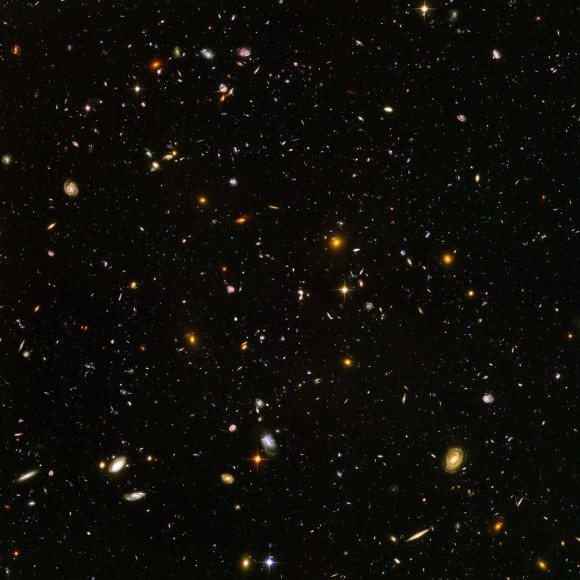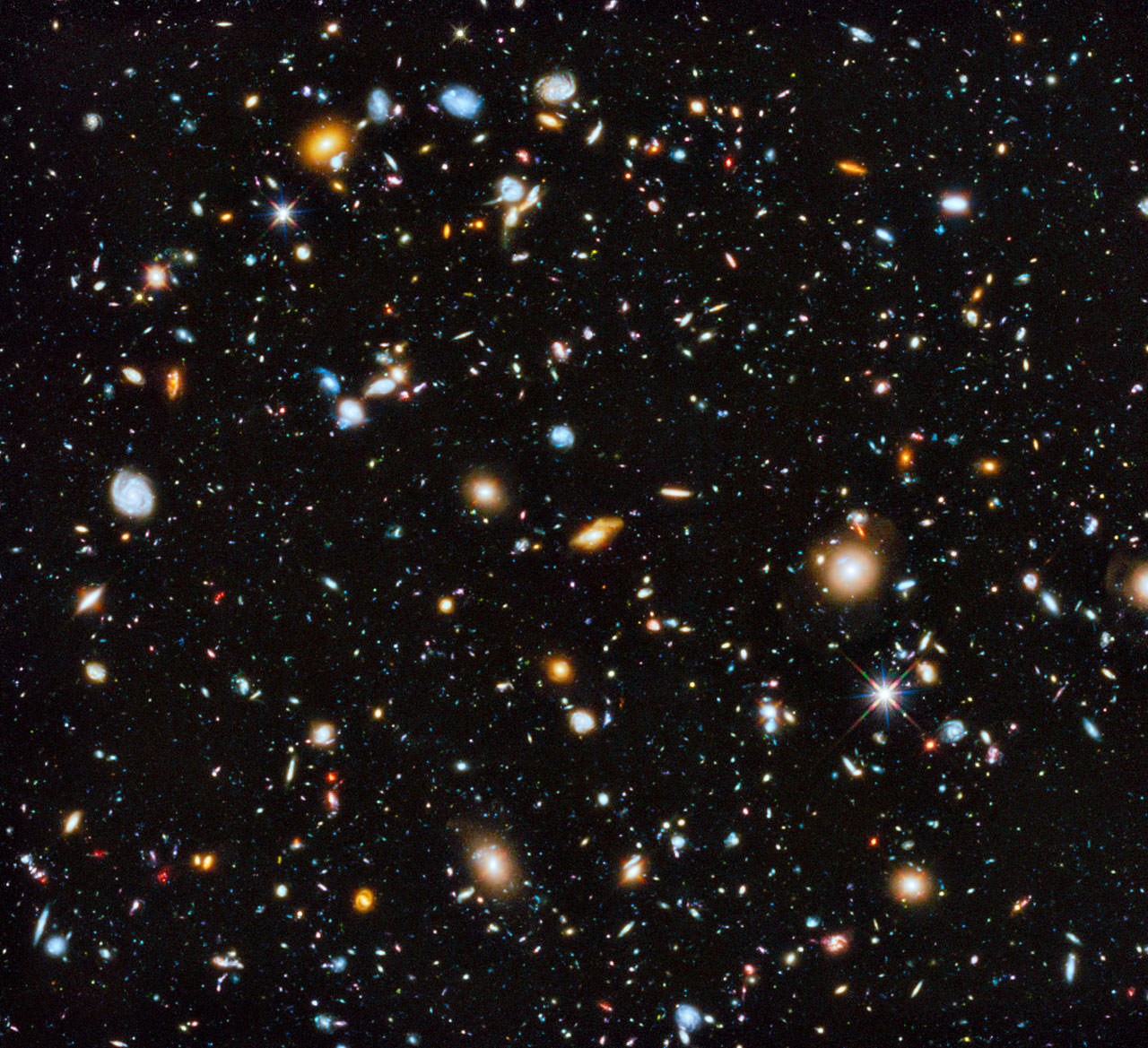It’s perhaps one of the most famous images in astronomy. The Hubble Ultra Deep Field displays nearly 10,000 galaxies across the observable Universe in both visible and near-infrared light. The smallest, reddest galaxies are among the youngest known, existing when the Universe was just 800 million years old.
But now, with the addition of ultraviolet light the renowned image is even better than ever.
“We’ve taken new observations with the Hubble Space Telescope and made a new image of this very famous region of the sky — the Hubble Ultra Deep Field — which gives us one of the most comprehensive pictures of galaxy evolution ever obtained,” said Harry Teplitz from Caltech, in a talk presented at the American Astronomical Society meeting in Boston today.
The image has undoubtedly captured the minds of amateurs and provided astronomers with a wealth of data, from which to study galaxies in their most primitive stages.
But there was a caveat: without ultraviolet light, which tells us about the youngest and hottest stars, there was a significant gap in our understanding of these forming galaxies. Between 5 and 10 billion light-years away from us — corresponding to a time period when most of the stars in the Universe were born — we were left in the dark.
Compare the new image to an older version:

Now, with the addition of ultraviolet data to the Hubble Ultra Deep Field, astronomers can see unobscured regions of star formation throughout this time period. It will help us understand how galaxies grew in size from small collections of very hot stars — now visible across the observable Universe — to the elegant structures we see today.
Here’s a ‘pan and zoom’ video version of the new image:
For more information on the new and improved Ultra Deep Field, check out the HubbleSite.

